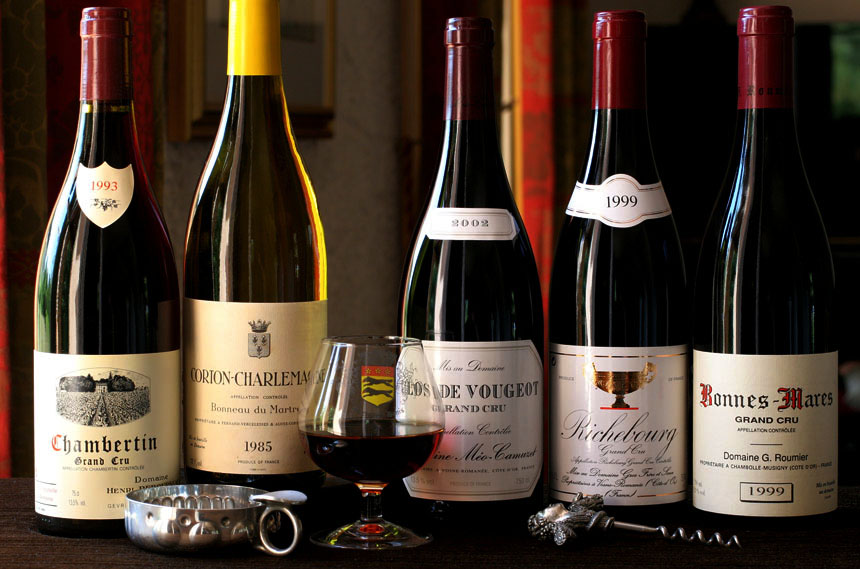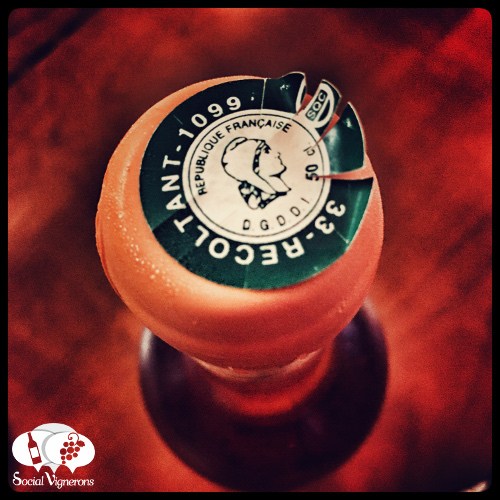
Choosing a good French wine
Apart from what is on the label of a French wine, the capsules can help you to select your wine. You may ask ‘what is a capsule?’ In fact, there are an assortment of foils used for the capsules, which cover the bottle closure – cork or metal screw caps. The least expensive are PVC plastic, then a material called poly-laminate, a mix of PVC and aluminium. Probably the most popular is aluminium, and the most expensive is tin.
If you are not sure of the quality or style of the wine which is in the bottle, then read this article and find out how it could help you.
In France the capsules can tell you a lot about the wine, and read with the information on the label (see previous article HERE), it gives you some helpful information. The capsule is called a CRD (Capsule Representative des Droits) and they are decorated with the seal of ‘Marianne’ the woman chosen to represent the French republic after the French Revolution at the end of the 18th century.
What is the purpose of the capsule?
Their primary use is for legal purposes. They prove that the alcohol tax has been paid to the French government by the producer. This formality allows the wine to be commercially sold in France. If there is no capsule with Marianne on it, there should be a document that comes with the bottle to replace the capsule. If the wine is to be exported, the payment of this tax is refundable by the DGDDI (Direction Generale des Douanes et Droits Indirect).
What do the different colours mean?
The colour of the capsule top gives you immediate information on the type of alcohol in the bottle:
GREEN: Wines classified in the category VQPRD (Vins de Qualite Produts dans une Region Determine) which include the AOC wines (Appellation d’Origine Controllee) and AOP (Appellation d’Origine Protegee)
BLUE: All other wines – table wines and those made outside of the region’s strict criteria, which means they do not fit into the AOC labelling category (Vins de pays and Vins de tables) and all drinks that are taxed as wine
RED: (colour of red wine): Can be used instead of blue or green, except for AOC sparkling wines (e.g. Champagne), and AOC Natural Sweet Wines (Vins Doux Naturels), and drinks which are taxed as wines. This was an order passed on 5 July 2011.
ORANGE: Special wines or liqueurs, fortified wines (Vins Mutes)
Fortified wines are classified depending on when alcohol has been added prior to fermentation (Mistelle), during fermentation (vin mute) or after fermentation (vin vine) There is no real English equivalent for these terms.
YELLOW: Cognac or Armagnac
GREY: Other wines such as Ratafia
RED (Bright red): Traditional Rums
WHITE: All other alcoholic drinks
What is printed on the centre of the capsule top?

Around the central picture of ‘Marianne’ there is the ‘Republique Francaise’ and the letters DGDDI (Direction Generale des Douanes et Droits Indirect), which indicates that taxes have been paid. Also here is the quantity of wine in the bottle – in the photos it is 50 centilitres.
On the external blue band there is a letter ‘E’ and two numbers ‘33’ and ‘1099’.
The ‘33’ indicates the department where the wine was bottled, normally where the wine was produced, but this is not always the case. For example, '33' is in the Bordeaux region and ‘83’ is a department known as the ‘Var’ where the best- known wines are Roses, although reds and whites are also produced. The best French Rose wine region ‘Bandol’ is in this department.
What does the letter indicate?
The letter indicates the qualification of the bottler. Sometimes, as in the case above, the whole word is shown - recoltant.
E (entrepositeur) indicates a warehouse stockist where grapes or wine have been bought elsewhere and commercialised under the name on the label
N (negociant) indicates a non-producer who has bought the wine ready made before bottling it.
R (recoltant) indicates that the bottler has done the whole chain of production: grape-growing, wine-making and bottling. This is usually the better wines.
The number on the right ‘1099’ indicates the approval number
How to make use of the capsule information
The information on the capsule is complementary to that found on the label of French wines. If you do not know the name on the label, the letter on the capsule tells you if the wine is produced by the bottler, (letter ‘’R) or if it is likely to be an inferior wine, purchased by a stockist when it is already made, in which case it would have the letter ‘E’.
Also, when bottles are in a cellar and the label is not showing, the colour of the capsule can assist in showing what the contents of the bottle are – for example a classified wine (green capsule), or a table wine (blue).
If you like quality wines then remember to choose a green label and the letter 'R' on the capsule and you can't go wrong! Confusing or enlightening?
Slow Tours offers a number of Wine Tours in Europe